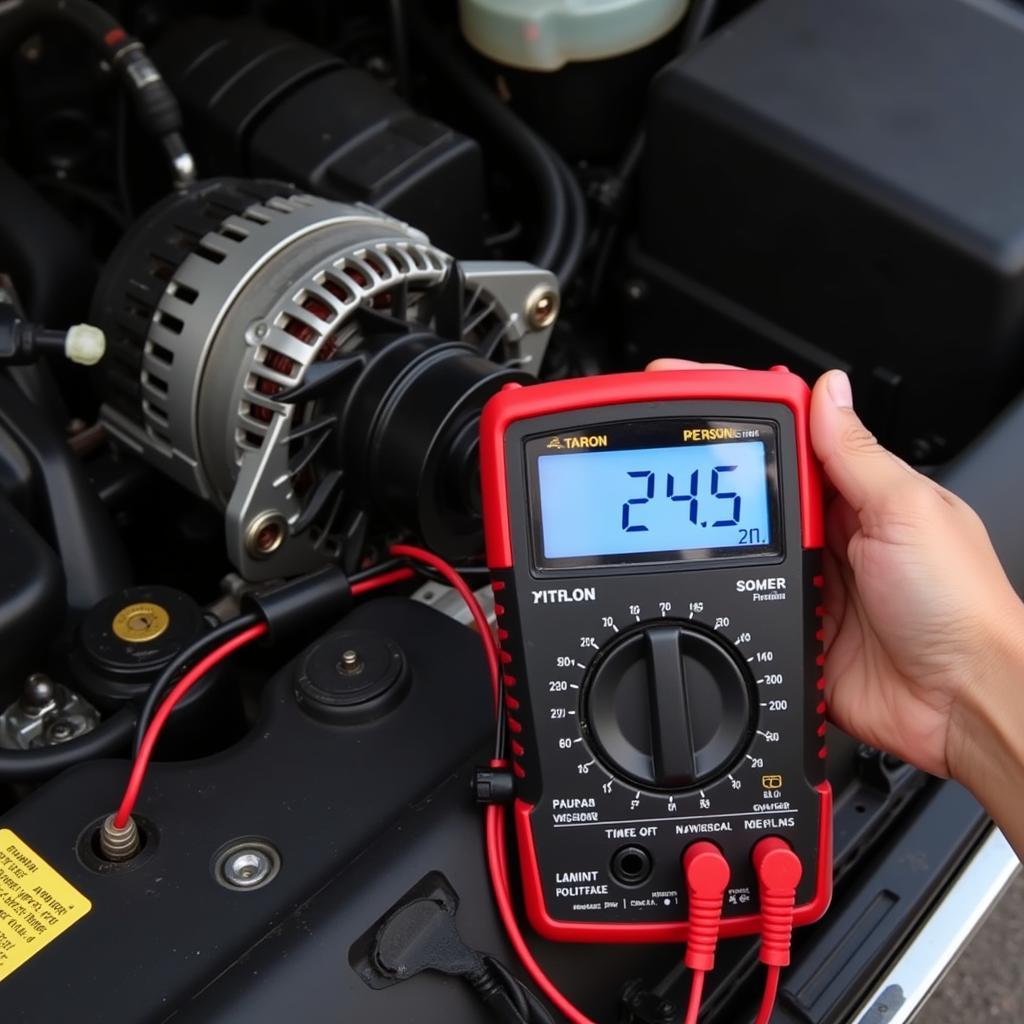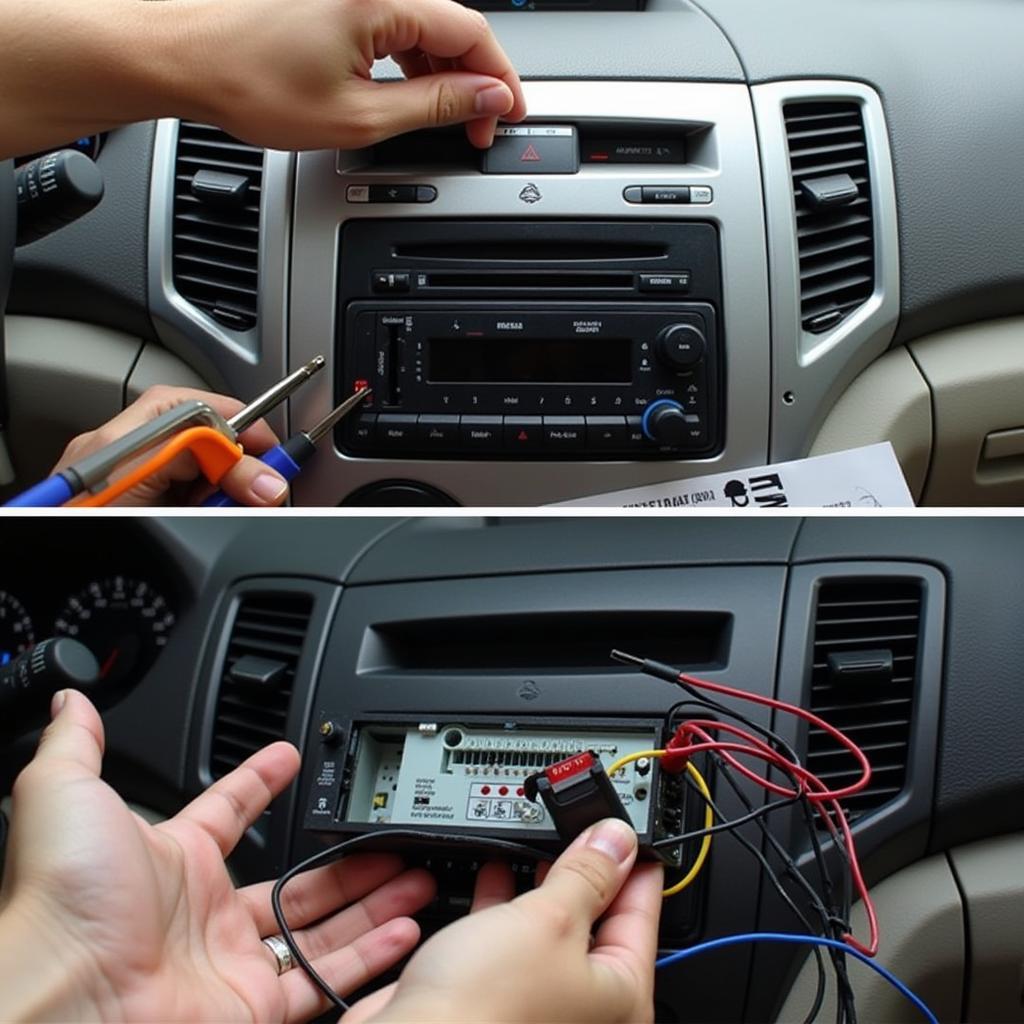The Ford C-Max is a popular choice for families and individuals seeking a practical and reliable vehicle. However, like any other car, it can experience occasional hiccups, and one common issue is the persistent seat belt warning light. While it’s designed to keep you safe, a malfunctioning warning system can be a frustrating experience. This guide delves into the common causes of the Ford C-Max seat belt warning, explores various solutions, and highlights how remote diagnostics can provide swift and efficient fixes.
Decoding the Seat Belt Warning System
Your Ford C-Max uses sensors to determine if the driver and passenger seats are occupied and if the seat belts are fastened. When you start the car, the system performs a self-check. If a sensor detects an unbuckled belt while the car is in motion, it triggers an audible chime and a visual warning on the dashboard. While this system is crucial for safety, several factors can lead to malfunctions, triggering false warnings.
Common Causes of Seat Belt Warning Light Malfunctions
-
Faulty Seat Belt Buckle Sensor: The most common culprit is a faulty sensor within the buckle assembly. Over time, wear and tear can disrupt the connection, leading the system to misinterpret the buckle status.
-
Damaged Wiring Harness: The wiring harness connecting the seat belt buckle sensor to the vehicle’s electrical system can become frayed or damaged, disrupting the signal flow and triggering false warnings.
-
Seat Belt Pretensioner Issues: In the event of a collision, the seat belt pretensioners tighten the belts to secure occupants. A malfunctioning pretensioner can also trigger the warning light.
-
Software Glitches: Like any other computer system, the software controlling the seat belt warning system can encounter glitches, leading to erroneous warnings.
 Ford C-Max Seatbelt Buckle Closeup
Ford C-Max Seatbelt Buckle Closeup
Troubleshooting the Ford C-Max Seat Belt Warning Light
-
Check the Basics: Before jumping to conclusions, ensure the seat belts are indeed fastened securely. Sometimes, a simple readjustment can solve the issue.
-
Inspect the Buckle: Visually inspect the buckle for any signs of physical damage or debris that might interfere with the sensor.
-
Check the Wiring: Carefully examine the wiring harness under the seat for any visible damage, such as cuts, frays, or loose connections.
-
Consult the Owner’s Manual: Your owner’s manual is a treasure trove of information. Consult the troubleshooting section for specific instructions related to the seat belt warning system in your model year.
Remote Diagnostics: A Modern Solution for a Modern Problem
In today’s digital age, remote diagnostics offers a convenient and efficient solution to address the Ford C-Max seat belt warning. By remotely accessing your car’s computer system, specialized technicians can:
-
Read Diagnostic Trouble Codes (DTCs): Identify the specific fault codes stored in your car’s system, pinpointing the root cause of the warning light.
-
Perform Software Updates: If a software glitch is the culprit, technicians can remotely install the latest software updates to resolve the issue.
-
Guide Troubleshooting Steps: Through remote diagnostics, technicians can guide you through targeted troubleshooting steps based on the identified fault codes.
The Benefits of Remote Diagnostics
- Convenience: No need to visit a workshop; diagnostics and solutions are delivered remotely.
- Speed: Remote diagnostics often provide faster resolution compared to traditional methods.
- Cost-Effective: In many cases, remote diagnostics can save you time and money compared to in-person visits.
When to Seek Professional Help
While some causes of the Ford C-Max seat belt warning light can be addressed with basic troubleshooting, it’s essential to seek professional help if:
- The warning light persists after basic checks.
- You suspect damage to the wiring harness or pretensioners.
- You’re uncomfortable performing DIY repairs.
Conclusion
The seat belt warning light in your Ford C-Max plays a vital role in ensuring your safety on the road. By understanding the common causes, implementing basic troubleshooting, and embracing the convenience of remote diagnostics, you can swiftly address this issue and enjoy peace of mind during your journeys. Remember, if in doubt, always consult a qualified mechanic or dealership for expert assistance.



